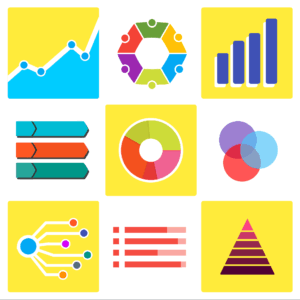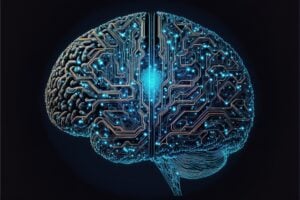An Introduction to AI Agents
As Encord notes in its blog, “AI Agents in Action: A Guide to Building Agentic AI Workflows,” agentic AI refers to “artificial intelligence systems with autonomy, decision-making capabilities, and adaptability. These systems are designed to pursue complex objectives and manage tasks with limited direct human supervision, allowing them to interpret nuanced contexts and make informed decisions.”
Encord further notes, “The importance of agentic AI lies in its ability to automate intricate workflows and improve decision-making across various sectors. By operating independently, these systems can handle tasks ranging from customer service automation to managing financial portfolios, thereby increasing efficiency and reducing operational costs. Other benefits of AI agent automation include boosting customer experiences through personalized interactions and quick responses. These agents also enhance performance by collaborating and sharing data for better task execution. Their ability to deliver detailed, accurate responses further improves user satisfaction and operational efficiency.”
Agentic AI systems can be structured around four integral components, according to Encord: Perception, Decision-Making, Learning, and Action. Each module plays a pivotal role in enabling autonomous operation and adaptability.
The Perception module is responsible for collecting and interpreting data from the environment. This involves utilizing sensor technologies and data ingestion pipelines to capture diverse inputs. The Decision-Making Engine employs algorithms and models to guide actions and assess potential risks. The Learning Mechanism enables agents to adapt over time through various machine-learning techniques, including supervised learning, unsupervised learning, and reinforcement learning. The Action Module executes decisions and interfaces with real-world or simulated environments.
Agentic systems are often categorized as single-agent (one autonomous entity operating independently) or multi-agent (multiple interacting agents collaborating or competing within a shared environment), each with distinct characteristics and applications.
AI in Action Summit to Hold Workshop
During the AI in Action Summit at TMRE 2025, Yogesh Chavda, Director, Center for Marketing Solutions at University of South Carolina, will hold the workshop, “Build and Optimize Concepts with Agentic Models.”
Traditional concept development is slow, expensive, and often subjective. What if AI could automate the process—generating, testing, and refining ideas in real-time? In this hands-on workshop, we’ll explore agentic models, AI-driven workflows that streamline concept optimization, making insights teams more agile and efficient. Attendees will build an automated AI-powered concept refinement model, leaving with a functional tool they can use immediately.
Key takeaways: Learn how agentic models automate concept development and refinement; build a hands-on AI-driven workflow to generate and optimize concepts; discover best practices for AI-powered insights—balancing automation with creativity.
Scaling Agentic Workflows
So just how can an insights professional leverage agentic Ai? For one thing, it’s important to focus on the design of the agentic AI workflows, suggests Yogesh Chavda, Director, Center for Marketing Solutions at University of South Carolina, in his LinkedIn post, “The Three Paths to Scaling Agentic Workflows in Marketing.”
First, Chavda notes that in terms of scaling, horizontal expansion should kick off, with a focus on building more workflows across teams. This drives adoption and creates faster wins. “You build one workflow for concept development. Then one for insights. Then one for messaging or campaign summaries,” suggests Chavda.
Second, vertical depth makes each workflow smarter. This builds brand-safe output and adds judgement while layering in intelligence. This creates what Chavda calls a strategic expert system. Third, cross-functional linking connects workflows into systems, creating strategic continuity and insights loops. “Now you’re not just using AI to accelerate tasks — you’re building an adaptive marketing system,” says Chavda.
“If you’re leading a team that’s already experimenting with AI, now’s the time to step back and ask: Are we building a collection of tools? Or an intelligent operating system for marketing?” says Chavda.
AI Agents in Action
Of course, nothing with AI stands still and the insights community is already looking at trends for what comes after, or at least what might enhance, agentic AI.
Encord suggests that these trends include advances in multi-agent collaboration; integration with emerging technologies such as blockchain and the Internet of Things; and human-agent collaborations and partnerships. These trends will drive innovation and efficiency, paving the way for more autonomous and intelligent systems.
The transformative potential is immense. “Agentic AI is revolutionizing industries by automating intricate workflows, optimizing decision-making, and reducing operational costs in applications like customer service, finance, and robotics,” says Encord.
Video courtesy of Jeff Su
Contributor
-

Matthew Kramer is the Digital Editor for All Things Insights & All Things Innovation. He has over 20 years of experience working in publishing and media companies, on a variety of business-to-business publications, websites and trade shows.
View all posts





















































































































































































